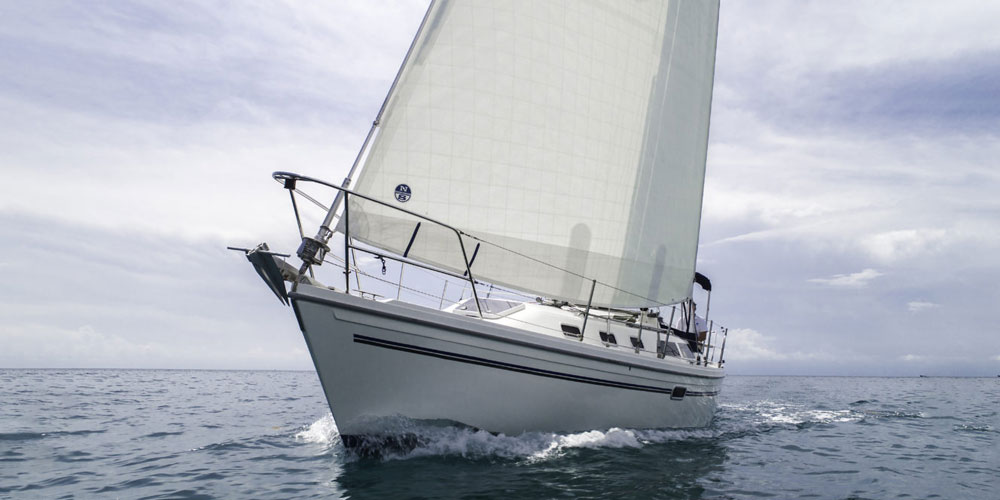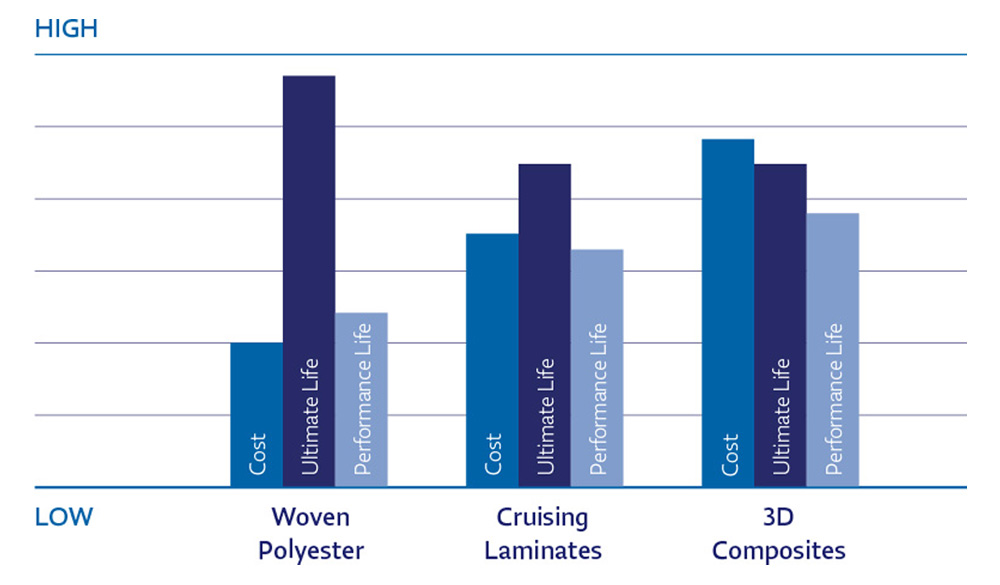Cruising sailors demand durability. Yet, durability is not an easily quantified element of sail performance. Predicting durability is a tough challenge because sails are subjected to so many different forms of use and conditions. That said, the most common question we hear from cruising sailors is: “How long will my sails last?”
The Longevity Question
How long should you expect your cruising sail to last? Here are some clues:
Charter fleets expect 2 – 3 years of use from basic woven polyester sails, which translates to about 1500 – 2500 hours. After 2,000 hours these sails are typically considered worn out.
The typical season for many cruising families might be 5 hours per day for 30 days a year – for a total of 150 hours. That means an average cruising sailor may expect about 10 years of use from a premium polyester cruising sail.
As cruising sails age, both the sail shape and the mechanical integrity of the material degrade. Sailors determine the service life of their sails when either the shape performance or structural reliability is compromised beyond their personal standards. No sailor should ever accept the possibility of a sail breaking while underway.

Materials
The most significant contributor to the lifespan of a sail is the material. Cruising sailcloth must be strong and low stretch. It must also be tough – resistant to abrasion, flex, impact and a variety of long-term environmental exposures including UV, heat, humidity, salt and mildew.
Cruising sailcloth: Each of these three distinct styles provide a different balance of durability and performance:
- Woven Polyester (“dacron”): Dacron fabrics are the toughest and most structurally stable.
- Cruising Laminates: offer lighter weight and increased shape holding.
- 3D Composite Material: exceptional shape holding and structural integrity beyond many laminates, this is a new generation of cruising materials.
Sailcloth quality matters in any discussion of durability. Well-engineered and well-made sail fabrics last longer. The highest quality materials are produced in specialized sailcloth manufacturing facilities and feature premium fibers, films, resins, coatings and adhesive systems. The highest value sails are made from the best quality materials.

Construction
Well-made sails last longer. Cruising sails should be custom designed and purpose built for the exact rig geometry and attachment points of the individual boat. Wear points such as spreaders, stanchions and radar domes should be covered with patches. Seams should be stitched properly with UV resistant thread and the correct seam width and number of rows appropriate to the boat size and material style. The design and construction of patches batten pockets, hardware attachment, leech and foot cords and other hardware attachments all affect sail longevity.
Use and Maintenance
How sails are used and how they are maintained are the other most important factors in how long sails last. Leaving a sail up and flogging in a squall for 30 minutes can equal 50 hours of “normal” sailing. Consistently flying a sail over its designed wind range can also age a sail well before its time. Allowing the leech to flutter without using the leech cord will cyclically damage the sail material.
Small problems left unattended become big ones later. Regular service helps sails last longer, just as it does with your automobile’s engine. Regular inspection will find unidentified chafe points, UV damage, pulled or broken stitching and hardware issues. Regular rinsing will keep salt of the sail which is a contributor to chafe and holds moisture which degrades cruising laminates. UV exposure is the single greatest environmental threat. Sails left in the sun must be covered. Old canvas loses its UV protection with time and new canvas should always be supplied with new sails.
